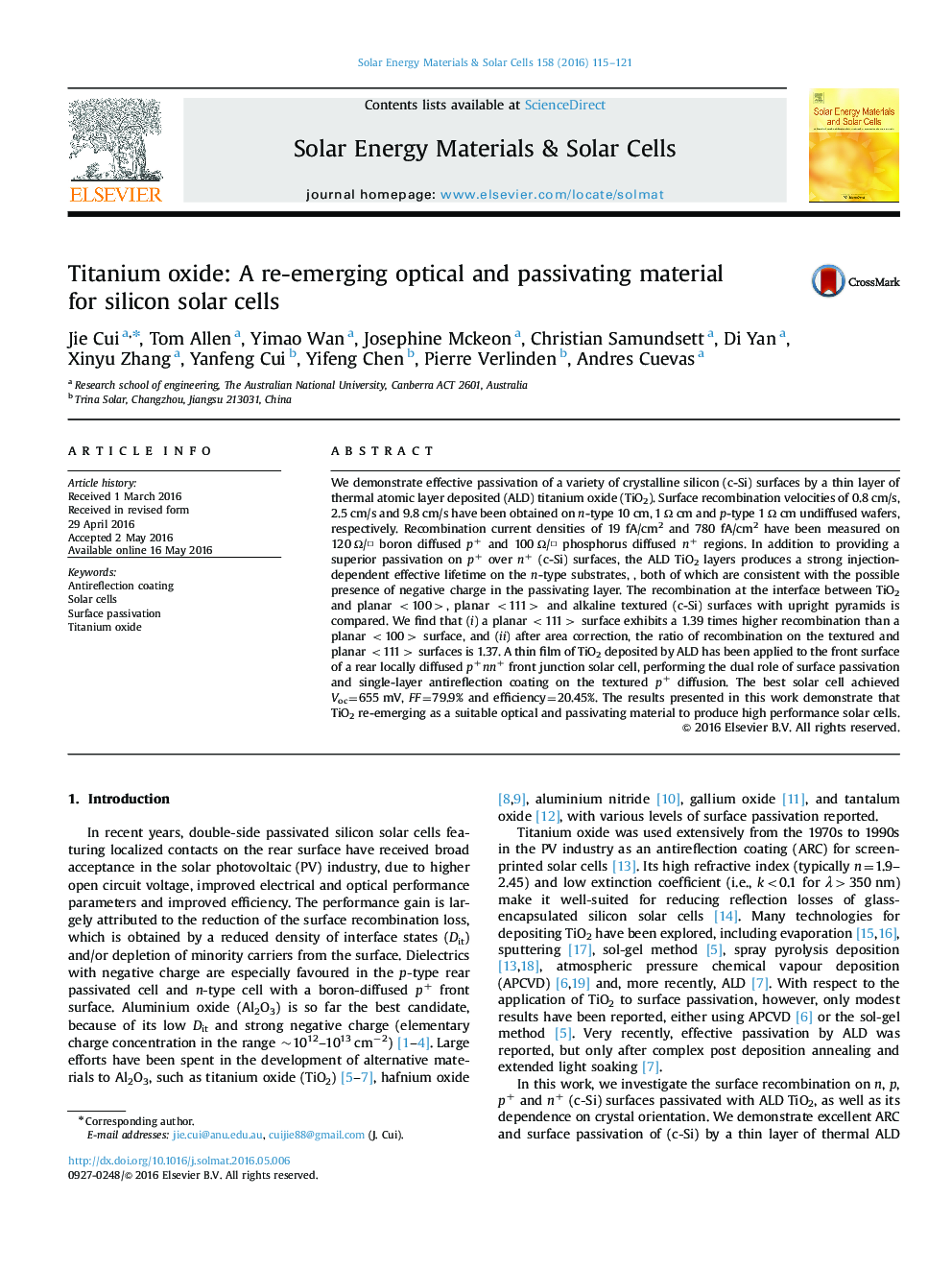| Article ID | Journal | Published Year | Pages | File Type |
|---|---|---|---|---|
| 6457439 | Solar Energy Materials and Solar Cells | 2016 | 7 Pages |
â¢The recombination decreases drastically with increasing TiO2 thickness on p, n and p+(c-Si) surfaces, and saturates at 15 nm.â¢Effective passivation were achieved on both undiffused n-type (J0=6.4 fA/cm2) and p-type (J0=7.3 fA/cm2) (c-Si) wafers, as well as boron-diffused p+ surfaces (J0=19 fA/cm2), without any post deposition treatment.â¢Planar {111} Si exhibits a 1.39-fold higher recombination than planar {100} Si; and recombination at a textured surface is similar about 1.37 times to that at a planar {111} after surface area correction.â¢Application of a single layer TiO2 ARC on rear locally-diffused p+nn+solar cells resulted in average cell efficiency over 20% and the best efficiency of 20.45%.
We demonstrate effective passivation of a variety of crystalline silicon (c-Si) surfaces by a thin layer of thermal atomic layer deposited (ALD) titanium oxide (TiO2). Surface recombination velocities of 0.8 cm/s, 2.5 cm/s and 9.8 cm/s have been obtained on n-type 10 cm, 1 Ω cm and p-type 1 Ω cm undiffused wafers, respectively. Recombination current densities of 19 fA/cm2 and 780 fA/cm2 have been measured on 120 Ω/⡠boron diffused p+ and 100 Ω/⡠phosphorus diffused n+ regions. In addition to providing a superior passivation on p+ over n+ (c-Si) surfaces, the ALD TiO2 layers produces a strong injection-dependent effective lifetime on the n-type substrates, , both of which are consistent with the possible presence of negative charge in the passivating layer. The recombination at the interface between TiO2 and planar <100>, planar <111> and alkaline textured (c-Si) surfaces with upright pyramids is compared. We find that (i) a planar <111> surface exhibits a 1.39 times higher recombination than a planar <100> surface, and (ii) after area correction, the ratio of recombination on the textured and planar <111> surfaces is 1.37. A thin film of TiO2 deposited by ALD has been applied to the front surface of a rear locally diffused p+nn+ front junction solar cell, performing the dual role of surface passivation and single-layer antireflection coating on the textured p+ diffusion. The best solar cell achieved Voc=655 mV, FF=79.9% and efficiency=20.45%. The results presented in this work demonstrate that TiO2 re-emerging as a suitable optical and passivating material to produce high performance solar cells.
